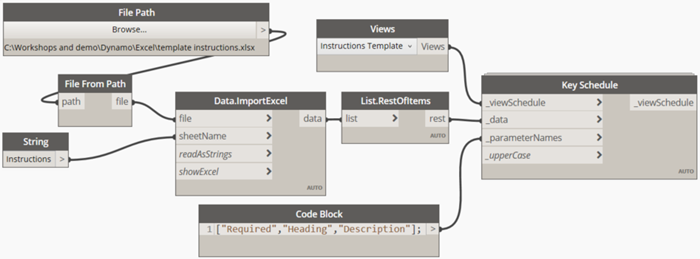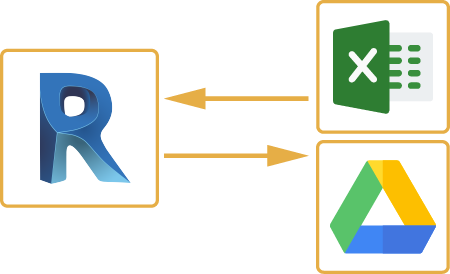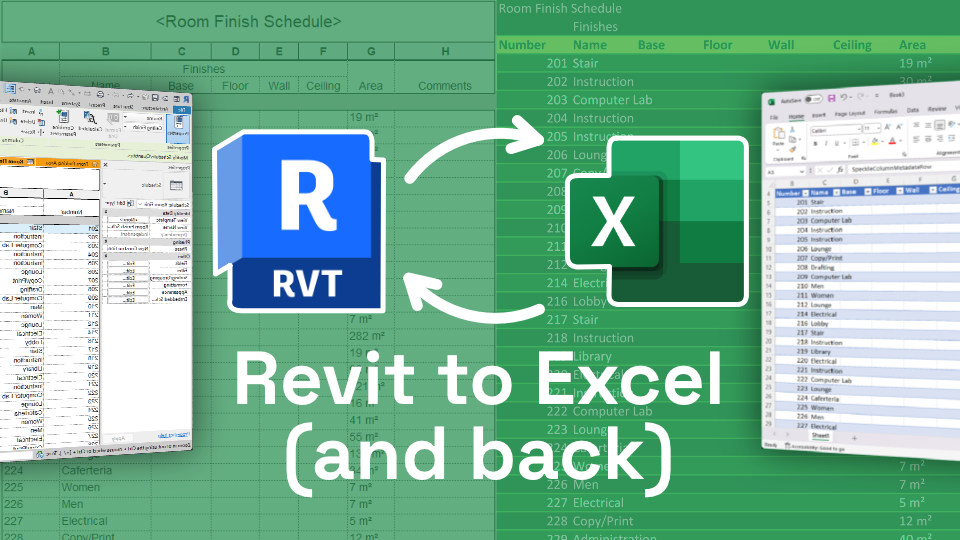Enhance Your Workflow with Revit Add Ins and Plugins
Wiki Article
Understanding the Art of Information Combination: Just How to Seamlessly Import Excel Record Into Revit
Are you battling to import Excel documents right into Revit smoothly? Look no more! In this article, we will assist you through the procedure of mastering the art of data assimilation. Discover the importance of smooth assimilation in Revit and discover the Excel data style for Revit combination. Prepare yourself to prepare your Excel information easily and follow our detailed guide to import files right into Revit. With our ideal techniques, you'll accomplish data combination success in no time. Allow's begin!Comprehending the Significance of Data Assimilation in Revit
Understanding the importance of information integration in Revit is important for seamless importing of Excel files. When you incorporate data from Excel into Revit, it enables you to effectively upgrade and take care of info throughout the entire job. This integration guarantees that your design and building and construction process is updated and exact.By incorporating information, you can conveniently import and upgrade criteria, timetables, and also geometry in Revit. This eliminates the demand for manual data entrance, saving you time and minimizing the danger of errors. With Revit's information integration capabilities, you can preserve uniformity and precision in your task, while also boosting collaboration among staff member.

Checking Out the Excel File Layout for Revit Integration

In order to successfully integrate Excel data right into Revit, it is essential to make certain that the data is formatted appropriately. This includes appropriately labeling columns and rows, as well as structuring the data in such a way that is compatible with Revit's data schema. Revit uses details criteria and categories to arrange data, so it is crucial to line up the Excel data with these criteria to ensure a seamless assimilation.
Furthermore, it is necessary to keep in mind that Revit only supports certain information types when importing from Excel. These include message, numbers, and days. Any kind of other data kinds, such as formulas or conditional formatting, will certainly not be identified by Revit and may cause problems during the combination process.
Preparing Your Excel Information for Seamless Import Into Revit
To make sure a smooth combination process, you'll need to appropriately style and label the columns and rows in your Excel data before importing it into Revit. This step is essential due to the fact that it enables Revit to accurately analyze and arrange your information. Begin by examining your Excel information and recognizing which rows and columns contain appropriate details for your Revit task. Make sure to identify each column with a clear and detailed header. This will aid you and others quickly recognize the purpose of each column and avoid confusion during the import process.Next, make certain that the data in each column is effectively formatted. For instance, if you have a column for dimensions, make certain that all dimensions are continually formatted in the same systems of measurement. Revit counts on consistent import excel into revit formatting to precisely analyze and import information.
Additionally, it is necessary to inspect for any kind of empty cells or disparities in your information. Revit might not be able to check out or import data from cells that are empty or contain mistakes. It is advised to review your Excel information and clean up any type of disparities prior to importing it into Revit.
Step-By-Step Overview to Importing Excel Files Into Revit
When you've appropriately formatted and identified your Excel information, you can easily import it right into Revit by following this step-by-step overview. To begin, open Revit and navigate to the "Insert" tab. revit plugins.Next, a dialog box will certainly show up, allowing you to personalize the import setups. Here, you can select the worksheet you desire to import, define the variety of cells to import, and choose the appropriate devices for your data. When you've made your selections, click "OK" to proceed.
Revit will now present a preview of your Excel data. Take a minute to make sure and examine the preview that everything looks appropriate. If needed, you can make changes to the import setups by clicking the "Settings" button.
Best Practices for Information Assimilation Success in Revit
Make certain you comply with these ideal practices to ensure successful assimilation of data in Revit. Firstly, it is important to arrange your data in Excel before importing it into Revit. This suggests ensuring constant naming conventions, appropriate formatting, and precise information representation. Next, make use of Revit's built-in tools for information mapping. This will permit you to match the columns in your Excel data with the corresponding specifications in Revit. Bear in mind the units and information kinds when mapping the data, as any kind of inconsistencies can result in errors in the assimilation procedure.One more vital technique is to consistently confirm and update your data. In addition, make use of information validation devices within Revit to recognize any errors or variances in the incorporated data.
Lastly, it is recommended to develop a clear workflow for information combination. This includes specifying roles and obligations, setting up a communication channel in between group participants, and establishing a regular tempo for data updates and testimonials. By following these best methods, you can guarantee a successful and seamless integration of data in Revit, ultimately improving the performance and accuracy of your job.
Conclusion
In conclusion, grasping the art of information assimilation is essential for seamless import of Excel submits into Revit. Comprehending the importance of data combination in Revit is the very first step in the direction of successful assimilation.When importing data from Excel into Revit, it is essential to comprehend the data format and exactly how it can affect the combination procedure (revit add ins). Revit utilizes specific specifications and groups to organize data, so it is essential to align the Excel data with these parameters to make certain a seamless integration
Be mindful of the units and data types when mapping the data, as any discrepancies can lead to errors in the integration procedure.
In addition, make usage of information validation tools within Revit to recognize any kind of mistakes or inconsistencies in the incorporated information.

Report this wiki page